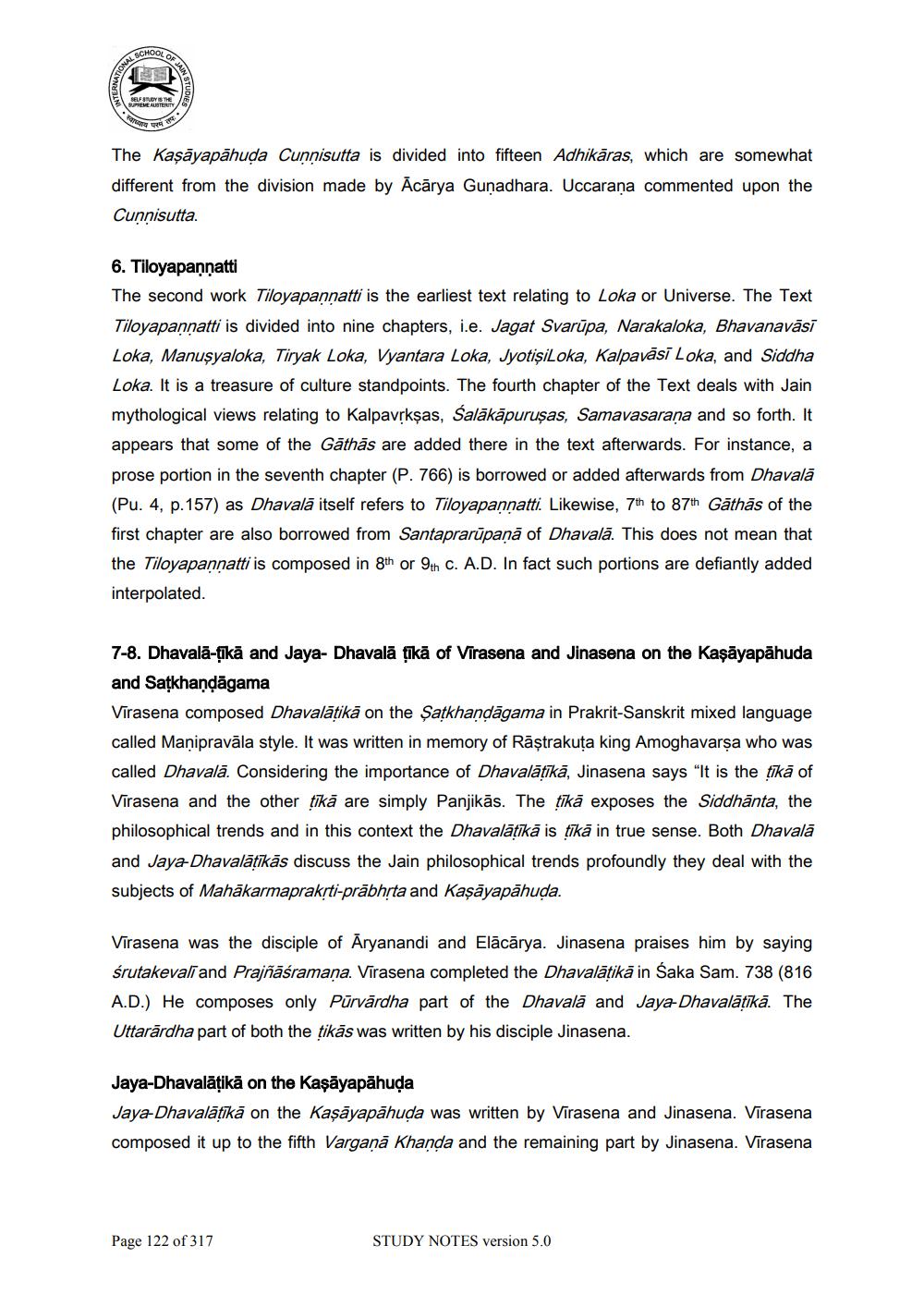________________
The Kaşāyapāhuda Cunnisutta is divided into fifteen Adhikāras, which are somewhat different from the division made by Ācārya Gunadhara. Uccarana commented upon the Cunnisutta.
6. Tiloyapannatti The second work Tiloyapannatti is the earliest text relating to Loka or Universe. The Text Tiloyapannatti is divided into nine chapters, i.e. Jagat Svarūpa, Narakaloka, Bhavanavāsī Loka, Manuşyaloka, Tiryak Loka, Vyantara Loka, JyotişiLoka, Kalpavāsi Loka, and Siddha Loka. It is a treasure of culture standpoints. The fourth chapter of the Text deals with Jain mythological views relating to Kalpavrkşas, Salākāpuruşas, Samavasarana and so forth. It appears that some of the Gathās are added there in the text afterwards. For instance, a prose portion in the seventh chapter (P. 766) is borrowed or added afterwards from Dhavalā (Pu. 4, p. 157) as Dhavalā itself refers to Tiloyapannatti. Likewise, 7th to 87th Gātrās of the first chapter are also borrowed from Santaprarūpanā of Dhavalā. This does not mean that the Tiloyapannatti is composed in 8th or 9th C. A.D. In fact such portions are defiantly added interpolated.
7-8. Dhavalā-tikā and Jaya- Dhavalā tikā of Virasena and Jinasena on the Kaşāyapāhuda and Satkhandāgama Virasena composed Dhavalātikā on the Satkhandāgama in Prakrit-Sanskrit mixed language called Manipravāla style. It was written in memory of Rāştrakuta king Amoghavarşa who was called Dhavalā. Considering the importance of Dhavalātīkā, Jinasena says “It is the tīkā of Virasena and the other tīkā are simply Panjikās. The tīkā exposes the Siddhānta, the philosophical trends and in this context the Dhavalātīkā is tīkā in true sense. Both Dhavala and Jaya Dhavalātīkās discuss the Jain philosophical trends profoundly they deal with the subjects of Mahākarmapraksti-prābhrta and Kaşāyapāhuda.
Virasena was the disciple of Āryanandi and Elācārya. Jinasena praises him by saying śrutakevalī and Prajñaśramana. Vīrasena completed the Dhavalātikā in Saka Sam. 738 (816 A.D.) He composes only Pūrvārdha part of the Dhavalā and Jaya Dhavalātīkā. The Uttarārdha part of both the tikās was written by his disciple Jinasena.
Jaya-Dhavalātikā on the Kaşāyapāhuda Jaya Dhavalātikā on the Kaşāyapāhuda was written by Virasena and Jinasena. Virasena composed it up to the fifth Varganā Khanda and the remaining part by Jinasena. Virasena
Page 122 of 317
STUDY NOTES version 5.0




